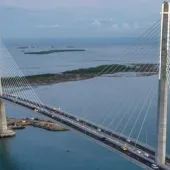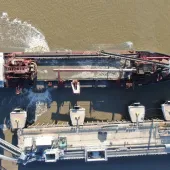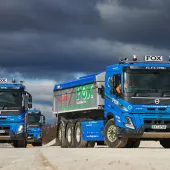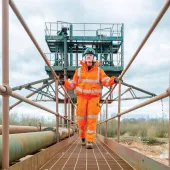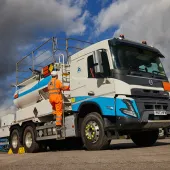Direct Vision Standard launched in London
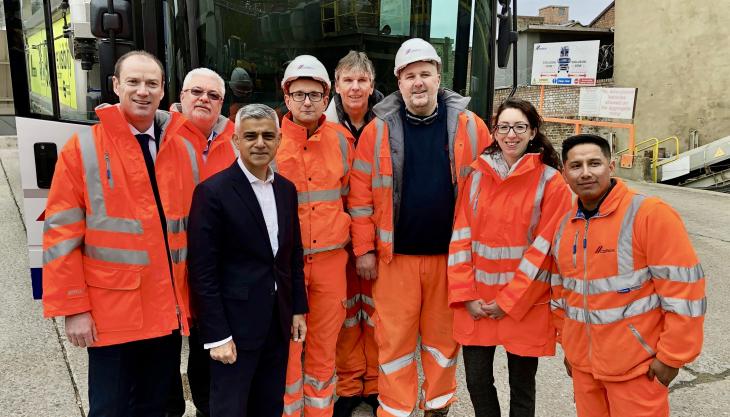
Mayor launches scheme to revolutionize London lorry safety at CEMEX’s Stepney concrete plant
A WORLD-leading scheme to remove the most dangerous heavy goods vehicles (HGVs) from London’s streets has been launched today by the Mayor Sadiq Khan, Transport for London (TfL) and London councils.
Mr Khan visited CEMEX’s Stepney concrete plant to see Direct Vision Standard (DVS) lorries in action. All of the vehicles that CEMEX operate in London meet or exceed the minimum DVS requirements in place until 2024.
The first of its kind, the Standard tackles road danger at its source by minimizing HGV blind spots which contribute to many tragic deaths and life-changing injuries.
Based on how much a driver can see directly through their cab windows, the unique star system rates HGVs over 12 tonnes from zero (lowest) to five (highest). HGVs will need to meet a minimum ‘one-star’ rating by the time enforcement begins to allow them to operate in London or will need to fit ‘Safe System’ measures to improve the vehicle’s safety.
Big lorries are disproportionately involved in fatal collisions. Whilst they account for just 4% of the overall miles driven in the capital, between 2015 and 2017, HGVs were involved in 63% of fatal collisions involving cyclists and 25% involving pedestrians.
From this week, operators can apply for an HGV Safety Permit ahead of enforcement beginning on 26 October 2020. HGV operators who fail to meet these new minimum safety standards and obtain a permit will be issued a penalty charge for driving in the capital.
The Direct Vision Standard will operate 24 hours a day, seven days a week and will be enforced within the Greater London Boundary.
The Mayor of London, Sadiq Khan, said: ‘I’m proud of our world-leading plans to remove the most dangerous lorries from London’s streets. So many of the tragic deaths on our roads involve HGVs and this new scheme will help save lives.
‘Forward-looking businesses have already been choosing safer vehicles in the run up to HGV safety permits becoming available. Today, the scheme has gone live and operators now have 12 months to upgrade their fleets, helping make our streets much safer for people walking and cycling.’
David Hart, CEMEX’s supply chain director for the UK, commented: ‘We were honoured to welcome Sadiq Khan and the TfL team to our Stepney site today as the Direct Vision Standard is launched. DVS is a landmark scheme that will ensure that all road users and pedestrians are safe as they come across HGVs while moving around the city.
‘We fully support the programme; safety is CEMEX’s number one priority and informs all aspects of our operation. We are committed to investing in, and developing, our fleet so that it continues to reflect the latest advancements in safety features. In the UK, we are proud to be a FORS Gold operator and compliant with the CLOCS standard, and are just as committed to the Direct Vision Standard for HGVs. We look forward to continuing to work with the Mayor, TfL and London councils for safer roads and streets here in London and beyond.’
The Direct Vision Standard is part of TfL’s Vision Zero commitment to tackle the number of people being killed and seriously injured on London’s roads. Dr Steve Summerskill, senior lecturer at Loughborough University, where researchers have been instrumental in bringing the DVS to where it is today, said: ‘This successful project is the result of the efforts of a number of staff in the Loughborough Design School, who have worked as a team to produce an innovate and accurate testing technique that has been validated by vehicle manufacturers.
‘The result will have a beneficial effect on the safety of vulnerable road users in the UK capital and further afield. An impact assessment performed by TRL (Transport Research Laboratory),on behalf of the EU, showed that European adoption would save hundreds of lives per year.’


